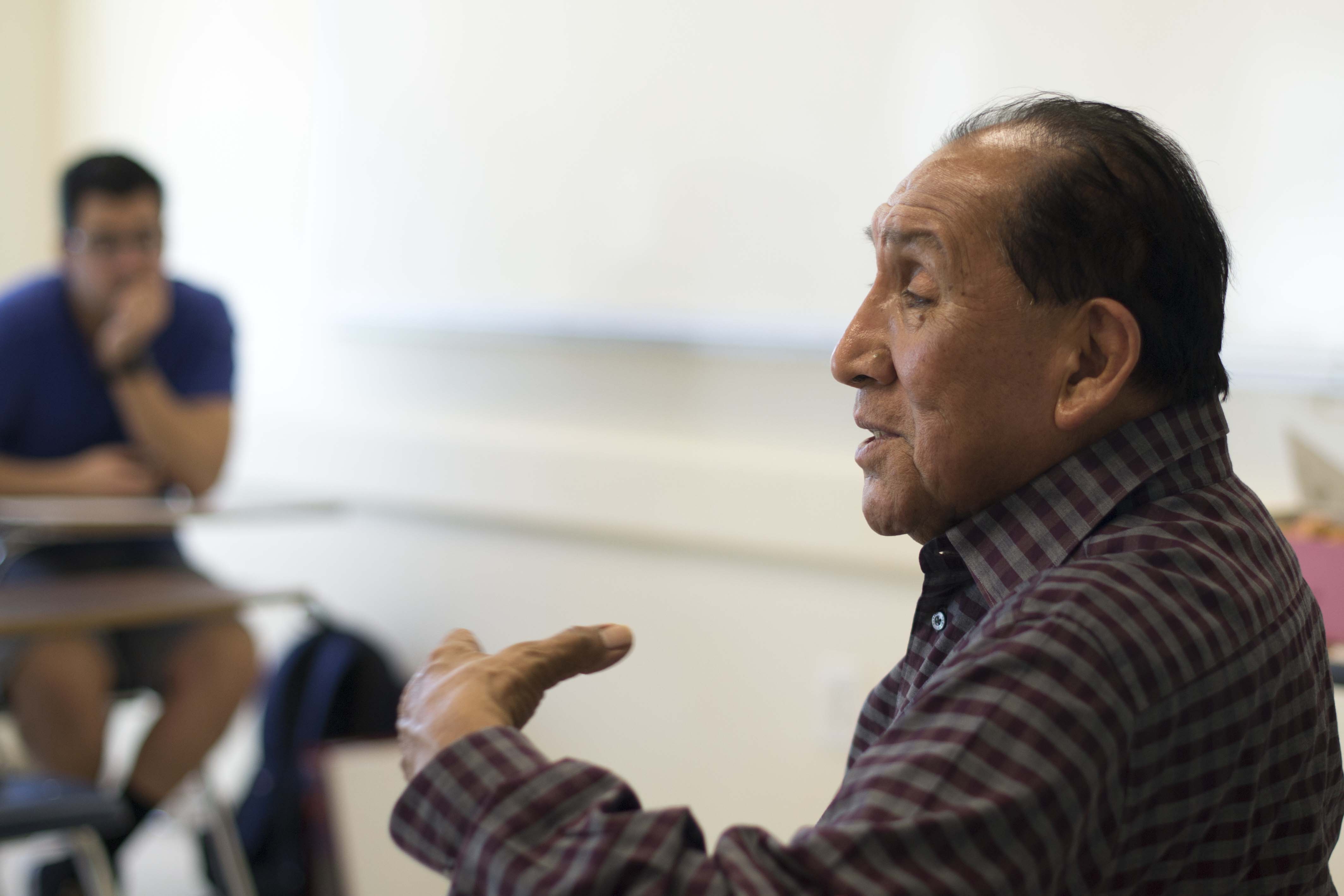In a classroom at Cal State San Bernardino, Ernest Siva shares a traditional Serrano story with students. He reads aloud in a language that was spoken by as many as 30,000 Native Americans in the San Bernardino mountain areas before settlers arrived in the 18th century.
78-year-old Siva remembers speaking Serrano at home with his mother and grandfather as a child. But in his generation, pressure to assimilate led English to become the tribe’s dominant language. Now, Siva is one of just two living speakers of Serrano. He’s hoping to pass on as much as he knows.
“I hope more and more people learn enough about it to keep the fire going. It’s our heritage. It does mean something to us and it really was important to the people,” Siva said.
The San Manuel Band of Mission Indians has been making a formal effort to preserve the Serrano language since 2004. Two years ago, the tribe teamed up with Cal State San Bernardino to offer college courses in the language.
The challenge was finding an instructor who could teach a language almost no one speaks.
Michael Navarrete, who describes himself as “Nicaraguan-Sicilian-German-Russian-Jewish,” is one of the people the tribe turned to. Navarrete said he didn’t even realize there were still Native Americans in California when he got the job. But, as a trained linguist, the idea intrigued him.
“It really is kind of a linguist’s dream job that I’m working on. For all intents and purposes it’s an extinct language but I’m trying to bring it back, so it’s very interesting even if I can’t talk to anyone,” Navarrete said.
Navarrete is teaching the introductory Serrano class at the university with Siva’s help. This semester they have just seven students.
None of the participants in Navarrete and Siva’s class have Serrano heritage. Most of them enrolled out of simple curiosity.
21-year-old psychology major, Vanessa Rodriguez already speaks Spanish and Romanian. She said Serrano just seemed interesting.
“I can learn a language outside, but this is a language that not many people know, so it’s not easy to come across to go find a book or something where I can learn from there,” she said.
The university hopes offering these courses will encourage students to take an interest in the cultural history of Southern California and help connect students with other parts of the community.
Carmen Jany, chair of CSUSB’s Indigenous Languages program, said, “The local tribes are part of our university community so we obviously want to serve the tribes as well. What is their main concern? To keep their languages and cultures alive, so we want to help them in that endeavor.”
The university started the program in 2012. They now offer courses in three Southern California indigenous languages: Luiseño, Serrano and Cahuilla. This year, the school also introduced a certificate program in California indigenous languages and cultures. Jany says the courses are available to community members as well as university students. She said she hopes that CSUSB students might someday learn enough about indigenous languages to work on the tribes’ reservations as teachers.
So far, enrollment has been low. The individual tribes pay for language instruction and Jany said without the tribes’ backing, the university probably wouldn’t be able to offer these courses.
Still, it’s an investment the tribes are willing to make in their future.
“Based on my experience, most tribes in the U.S. are playing catch up,” Navarrete said. “Most linguists think more than half the world’s existing languages will disappear by the end of the century.”
Southern California’s native languages are among those threatened, Navarrete said.
Navarrete and other linguists have helped compile a dictionary of about 4,000 Serrano words, but a lot of the language has already been lost. It’s something that concerns Siva.
“The main thing is to pass that on as much as we can,” Siva said.
Siva never thought he’d see a university teaching his language his lifetime. This course makes him feel hopeful.
There’s a traditional Serrano teaching on the matter, Siva said. “If you lose your language, you won’t have the deep roots of the oak, you’ll have shallow roots like grass, which withers and is gone.”
It’s a sentiment he hopes future generations will share.
Listen to this story on KPCC

